Best Plastic Containers for Food Storage
What are the best plastic containers for food storage? When it comes to storing food long-term, many of you in the past might have thought that a plastic container was just a plastic container and it didn’t really matter which type you went with. But when it comes to storing food and water for you and your family to consume at a later time, it’s actually a pretty big deal to choose the best containers for the job.
As it turns out, there are some plastic containers out there that contain dangerous toxins that are harmful to both you and the environment. So which are safe and unsafe? I’d like to share with you what I’ve learned. Keep reading to find out which plastics are safe for food storage. It’s time to say goodbye to those glass food-storage containers and hello to the more affordable plastic food-storage containers!
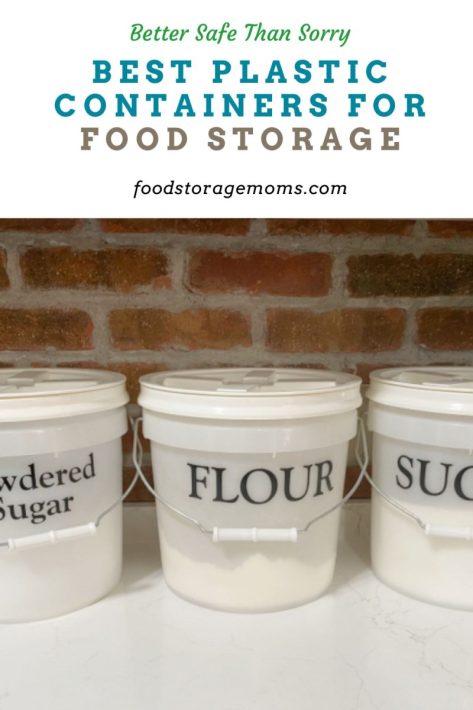
My Favorite Plastic Containers
- Rubbermaid Plastic Containers 6-Quart or 8-Quart
- 2-Gallon Plastic Buckets with Gamma Lids
- OXO Good Grips Containers (These are awesome because anyone can open them with ease)
- Rubbermaid Plastic Containers ( I love these because they are stackable)
Which Plastics are Safe?
Let’s just go ahead and cut straight to the chase, shall we? The following are plastics that are safe for you and your family when it comes to food storage.
Pet or Pete (Polyethylene Terephthalate)
Pete is a plastic that is safe to use for drinking water and food storage purposes but keep in mind that you should avoid exposing this type of plastic to high-heat environments. Although it’s lightweight, it’s strong, durable, and considered the easiest to recycle. This type of plastic is mostly used for packaging bottled water, soft drinks, peanut butter, salad dressings, and juice containers.
If you plan on reusing this type of plastic container, be sure that they were previously packaged to store food. Also, be sure that the screw-on plastic lid is still air-tight when sealed. You’ll need to remove any food residue by washing and rinsing and then allowing them to dry. Add an oxygen absorber package to each container and then fill them for bulk dry food storage with foods low in oil and moisture. Screw the seals on tightly and wipe away any food residue that may have gotten on the seal.
HDPE (High-Density Polyethylene)
High-density polyethylene is strong, weather-resistant, and long-lasting, making it a great plastic to use for storing food long-term. It’s also easy to recycle when you’re finished with it. HDPE is commonly used for food storage buckets, milk containers, motor oil, and haircare products. Food storage buckets are made to be sturdy and airtight, making them ideal for storing bulk dry items like flour, rice, beans, and oats.
While it is possible to reuse old milk jugs for storing your drinking water, it’s not as simple as rinsing them out. Although they’ve been approved by the FDA, getting them clean is not an easy task. It’s best to use these containers for cleaning your clothes and dishwashing rather than your drinking purposes. They can certainly be used as a last resort if needed for drinking if cleaned.
PP (Polypropylene)
Polypropylene is another plastic that is lightweight, but tough and flexible. It’s able to resist heat better than most other plastics while still providing a protective barrier to keep moisture and chemicals out. The perfect example of PP is the lining in your cereal boxes. Other items that polypropylene is used to make include margarine tubs, pails, disposable diapers, plastic bottle tops, packaging tape, chip bags, deli meat containers, straws, and even rope.
LDPE (Low-Density Polyethylene)
Low-density polyethylene is a softer plastic that’s more flexible than the other plastics I mentioned. This type of plastic has excellent barrier properties and it can be used for packaging items like cling wrap, squeezable bottles, frozen food bags, resealable snack bags, shrink wrap, bubble wrap, and garbage bags. LDPE is also considered to be less toxic, which means it can also be used for storing food.
While low-density polyethylene is usually reusable, it’s not always recyclable. The smaller plastic containers that LDPE usually comes in also make it impractical and difficult to sanitize when it comes to food storage.
Which Plastics are Unsafe and Should Be Avoided?
Now that I’ve mentioned which plastics are safe, let’s take a look at which plastics are unsafe for your family’s food storage purposes. These are plastics that should be avoided.
PVC (Polyvinyl Chloride)
Polyvinyl chloride is a plastic that contains toxic chemicals which include lead and phthalates. It is considered carcinogenic, meaning it can be potentially linked to cancer. PVC is used for packaging materials like blister packs, shrink wraps, and dark-colored food wraps.
PS (Polystyrene)
Polystyrene has many of the same properties as PETE but it’s not safe for storing food because it releases styrene over time which can cause cancer. Polystyrene is usually found in foam packaging, egg cartons, takeout containers, packing peanuts, and other items that you may find at your local grocery store or restaurant.
Is it safe to store food in plastic containers?
Plastic containers are safe for storing food, but it’s important to choose the right type of plastic. Look for containers labeled as “food-safe” or with recycling codes 1, 2, 4, or 5. Avoid using containers that are cracked or discolored, as they may leach harmful chemicals into your food. It’s a good idea to avoid microwaving plastic containers and you should hand wash them instead of putting them in the dishwasher.
Why would you need to know the best plastic containers for food storage?
- It’s important to have different sizes to use for the best food storage containers. You never know when you’ll need to store food!
- BPA-Free plastic is essential in plastic lids and containers.
- Meal prep? Even if you’re not storing food long-term, you still want to use safe plastic. That pasta sauce can still be used for a few more days if stored properly!
- While mason jars are a good choice, sometimes you want a food storage container set that’s a little easier to store and that can actually store quite a bit! Glass is safe, but can be riskier for cracks and chips around the top or to shatter if dropped.
- Storing dry food and dry goods in an airtight container made of plastic is a great choice, it just has to be the right type of plastic!
- Food waste can be a thing of the past! The right plastic food containers can help you save money and store food long-term!
What should I look for in a plastic storage container?
- Airtight seal
- Airtight lids
- Made of non-toxic material
- Pick containers that you can stack or nest to save room
- Consider containers that are dishwasher-safe
- Look for products that are leak-proof: many have a button device to lock the lid in place
- Try to find containers with a silicone seal or silicone gaskets which make for a tight lid
- Find containers that don’t retain odors or stains
- Few if any are oven-safe, but many are microwave safe
What would be one of my top picks when choosing plastic containers?
I really like the Rubbermaid Brilliance products. As quoted in a recent ad I read: “Rubbermaid Brilliance food storage containers are designed with leakproof lids and are made with crystal clear, stain, odor, and shatter-resistant StainShield plastic. The one-size fits all lids feature secure latches with built-in vents for splatter-free microwaving with the lid on. Plus, the containers stack to save space and stay organized in the fridge, freezer, or pantry.”
They also have sets that are made from glass that I like too.
When should I use plastic wrap?
Plastic wrap is great for short-term storage like when you put your leftovers in the fridge for a few days. It’s a great material that clings to plates and most containers for a temporary airtight seal. It is not designed for use when baking or for long-term storage.
Are plastic storage containers freezer-safe?
Most plastic containers come with labels that tell you if they are dishwasher, microwave, and/or freezer-safe. If you have a question, you can get the manufacturer’s instructions and usage by doing some site navigation on their website with your questions or concerns.
More Food Storage Tips
- Survival Food And Emergency Food Storage
- 10 Food Storage Ideas When You Don’t Have a Pantry
- 23 Food Storage Guidelines That Will Blow Your Mind
Final Word
Now that you know which plastics are safe to use when storing a food staple, whether it’s pantry staples for ready use or long-term storage in your basement, you’re informed. You also know which ones should be avoided when storing food. Make sure to properly label each plastic container so that everyone knows what type of material they’re dealing with. Knowing which plastics are safe and not safe can help you make informed decisions about food storage for your family. Now that you know there are a variety of sizes of airtight containers that are also plastic storage containers, you can start storing your food short term and long term! What are the best plastic containers for food storage that you use? May God Bless this world, Linda

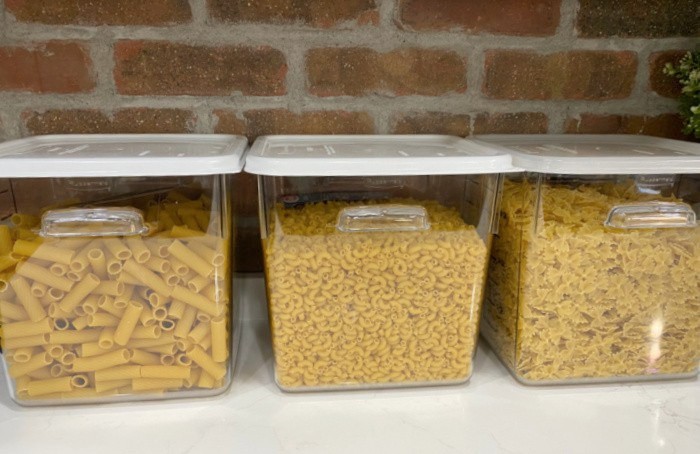

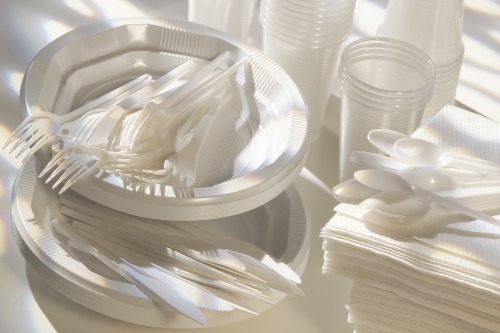
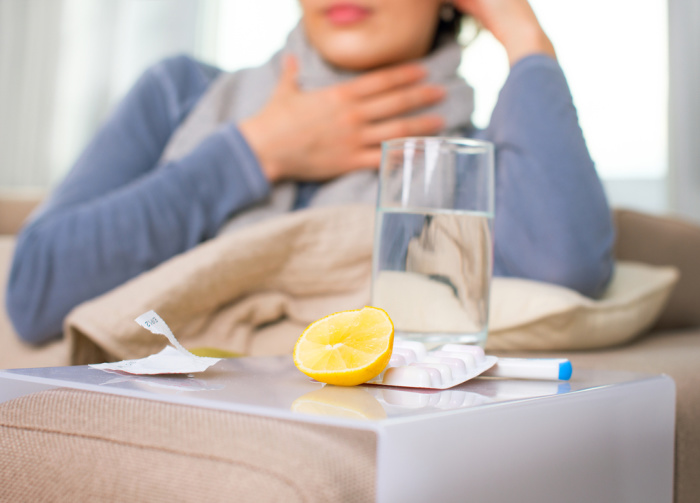
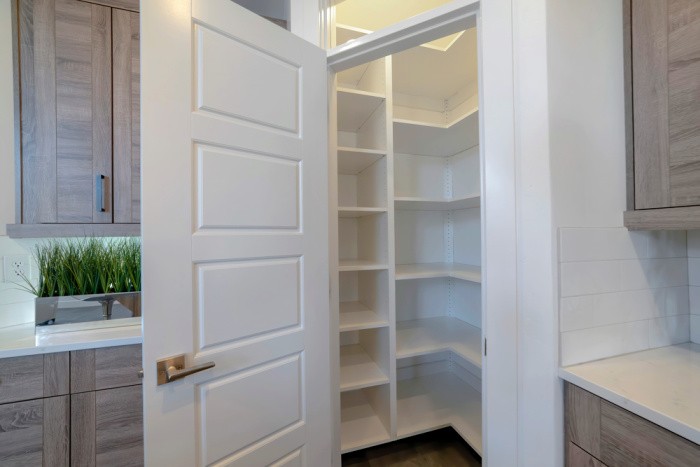
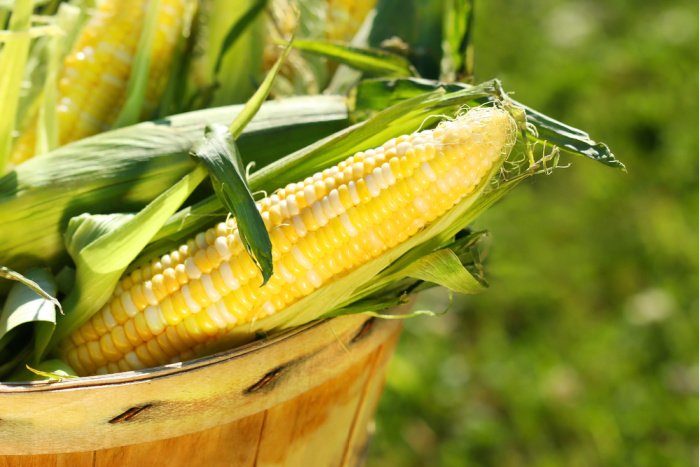
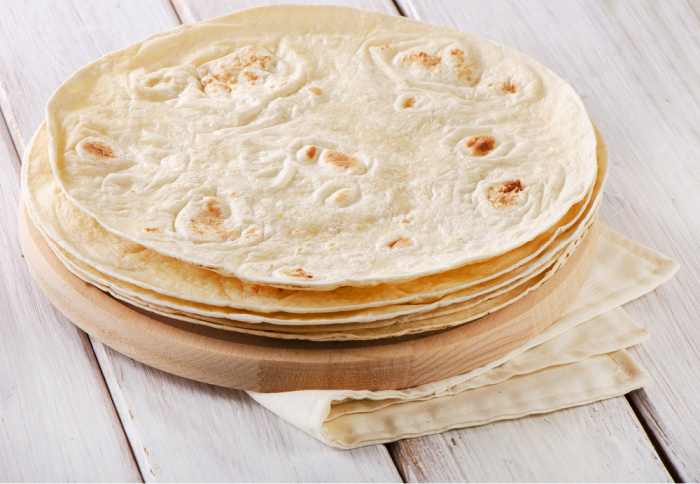
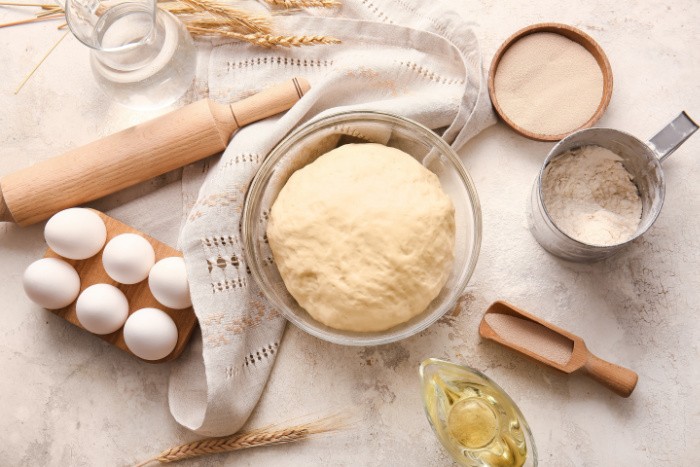













Hi Linda! I love love love this post. I have quite a few plastic containers for food storage. I love my 5 gallon buckets with gamma lids best, but they do take up quite a bit of space, but, I have smaller containers for daily use items. I do need more 5 gallon buckets though. I keep thinking of things I can store in them. LOL I need a house for my food storage. Well, all I want, anyway. We are going to try for a big garden this year. I have all I need to can the veggies and of course dehydrate them. I’m getting ready since the temperatures are already in the mid to upper 70s.
Hi Deborah, thank you for your kind words, my sweet friend! I love Gamma lids!! I can’t wait to hear what you plant, harvest, and preserve!!! Linda
Milk jugs should only be used for non potable water applications like toilet flushing IMO. They are good for mini greenhouses in the garden, jug lining, livestock feed scoops etc.
For food storage absolutely use the best possible option
Hi Matt, I totally agree! Buy right the first time! Linda
Hi Matt, I think those are codes for recycling not storing our food storage. It’s a little confusing but you are right please do not store food or water in your used milk jugs. Linda
Glad you posted this so quickly. I want to add that using HDPE plastic containers will make your food taste bad after sitting for a long time. I use 1 gal. ones for storage in my kitchen like flour, milk, sugar, foods that I normally use but if they sit for awhile even if they had no light, you will still get the plastic taste. I don’t know why. I always clean my containers good before use. This is what I’ve found on the plastic coding: https://polychem-usa.com/plastic-coding-system/. I am not saying do not use these, just make sure you are rotating them.
Hi Judy, I was going to add this type of graphic to the post and I forgot. I will go do it right now. Thanks for the reminder, Linda
Just so you know, I have read several articles about using the old colored “buckets” from Tupperware for food. Apparently, the colored ones leach LEAD! OH, MY GOSH! That is why I am getting rid of my old Tuperware buckets with the slip-on black handles!! What a bummer, cause I used to always look for the bright (cheerful) yellow Tupperware “buckets” for my oatmeal. NEVER AGAIN!
Well, the new ones that are clear, at least, are probably safe enough… I hope??
JESS
Jess, thank you for this information. My daughter is really into vintage just about everything. I did notice when I was visiting that she had several vintage Tupperware containers so I sent this information on to her. I also did a bit of research and found conflicting information. But, that said, I would say it is best to err on the side of caution with the used of vintage plastics! I hope my daughter also sees it that way.
Linda: I am unsure if that is true of ALL vintage tupperware or only the “buckets” and a few brightly colored bowls…at least that is what I remember from what I read. Are you and your daugther also aware that the vintage correlleware dishes that are painted are also contaminated with LEAD? I used to have the ivy pattern, which always looked very nice, but we had to throw those out! So, now we own a nice set of the plain white embossed ones, which are just wonderful! The only problem with the new set is that the embossing that is raised make it kind of hard to slide one dish out of the stack inside your cupboard. Otherwise, they are wonderful! Here is a link so people can see how beautiful they are: https://www.corelle.com/product/bella-faenza-12-piece-dinnerware-set-service-4?gclid=EAIaIQobChMIjNGi_LnP_QIV4cmUCR0XNAGKEAQYASABEgLjIPD_BwE
Thanks again for all you do, Linda! JESS
When I got married in 1983, I was given corelle dinner ware. I never really liked them though. So, using a dishwasher was brutal on them – after a year or so, they became so brittle that if dropped, they shattered into a zillion microscopic pieces! I got rid of them and started using regular dinner ware. I have to wonder, though, if all dinner ware contains things we don’t want in our bodies?? Perhaps 30-40 years from now, something will come out about glass containers, stainless steel, etc. I think we cannot win!!
My daughter does use vintage corning ware serving bowls. Wonder if they are like the corelle?
Hi Leanne, oh my gosh, I love Corelle dishes and baking pans. I better do research on that. I have Corelle dishes that still look like new. Plate, bowls, and pasta bowls. I bought them back in 2005 and they still look like new. I would have gotten rid of them as well, those broken Corelle pieces are hard to clean up. Glass shards are everywhere. Linda
Hi Leanne, yikes, yes, after she reads the information it may change her mind about using them. Linda
Hi Jess, I remember reading it was the Tupperware from the 50s, the 60s, and the 70s. They are not BPA-free and may contain lead, arsenic, cadmium, and mercury all of which are not safe. I remember even china dishes have lead, better safe than sorry, please do your research. I always say I use a Tupperware-Type container because I had read they are not safe (the ones I received as wedding gifts). If any of your containers have a #3, #6, or #7, those should be disposed of or trashed because they are considered high-risk plastics. Linda
THANKS for that extra information, Linda! I will look through my old Tupperware and see what needs booting! I appreciate all the great informatoin you provide us all with, Linda!
Hi Jess, thank you for your kind words. I can still picture my Harvest Gold color of Tupperware canisters sitting on the countertop. They are long gone now. Linda
The tupperware comment scares me because I’ve been gifted some old tupperware to use. I love it too because it’s so sturdy!
Hi Jess, it really is sturdy. If it’s newer I wouldn’t worry. It’s the Vintage (prior to 1970) pieces that are dangerous to use. Linda
Linda- this is is such good information. Not everyone is able to have access to expensive storage options, so this makes so much sense to me!
Hi Jess, I think if we start with a few good pieces and add to them, in no time you will have good containers that should last a lifetime. Linda